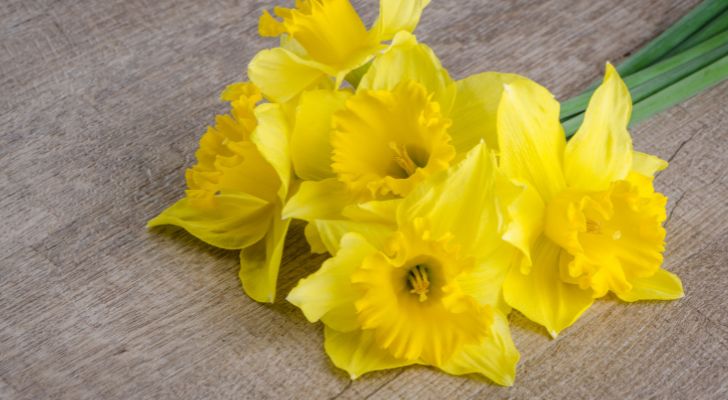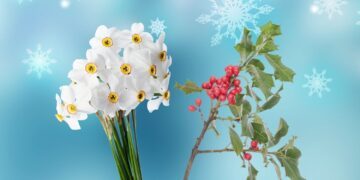With March, we usher in spring, and what better flowers than daffodils and jonquils to herald this marvelous seasonal change?
Revel in the glory of these beautiful yellow birth flowers today as we explore all there is to learn about daffodils and jonquils and the surprising differences and similarities between the two!
For example, did you know that they’re both classified under the same scientific family? They might appear identical at first, but there are subtle differences.
Stick around to learn these differences and more as we explore everything fun and exciting there is to learn about daffodils and jonquils!
10 Facts About Daffodils

You can’t place cut daffodils in the same vase with other flowers, especially roses and tulips. This is because the cut stems release narciclasine, a chemical that’s typically toxic to other flowers but ironically preserves irises.
Daffodils are also called Lent Lilies, especially in England. These spring flowers get this name because they typically bloom around the Lenten season, between Ash Wednesday and Easter.
When collecting daffodils, you must pick a whole bouquet or nothing at all. This is because a single flower is believed to bring bad luck, while a bouquet ensures happiness.
Daffodils are perennial plants that can bloom for several years as long as the environmental conditions remain favorable. A well-kept daffodil field can consistently yield new flowers for as long as 50 years.
Daffodils are the floral symbol for Wales and are usually in full bloom around Saint David’s Day on March 1st. According to the local legend, finding the first daffodil to bloom in a year brings good fortune and much gold.
There are approximately 36 daffodil species, but over 26,000 varieties of this flower have been cultivated. The vibrant yellow color is classical, but some have other shades like white, orange, and pink.
In the past, daffodils were used in brewing herbal concoctions and are still helpful in healthcare today. They contain a unique compound called galantamine, which is used in making medication for Alzheimer’s disease.
If you have a daffodil garden, you’re sure they’re protected from pesky pests like rodents, mice, squirrels, and even deer. The flower bulbs contain poisonous compounds that make the animals avoid them.
Daffodils are given to celebrate the 10th wedding anniversary. They represent a rebirth of the marital commitment.
Ancient Egyptian Pharaoh Ramses II was buried with two daffodil bulbs covering his eyes.
10 Facts About Jonquils

Jonquils are technically just a subtype of daffodils. Both flowers belong to the Amaryllis family and fall under the Narcissus genus, which also includes the narcissus flower.
Generally, each daffodil stem holds one flower, but jonquils are different because there are multiple flower clusters on each stem. Jonquils also have darker leaves, with more on each plant than a regular daffodil variety.
Like regular daffodils, jonquils are believed to bring good luck during China‘s New Year celebrations.
Narcissus, an attractive man so obsessed with his own beauty in Greek mythology, stared at his reflection in water for days. Tragically, he tumbled into the river and perished, and it’s said that jonquils grew where he sat along the riverbanks.
Jonquils have such a strong fragrance that they’re commonly used in making perfumes. Some say these flowers smell warm and sweet, like bubblegum.
The name jonquil is derived from junquillo, a Spanish word referring to the rush-like shape of this flower’s leaves.
Jonquils thrive in regions with warmer temperatures. They’re native to the Mediterranean, especially Portugal and Spain.
Roman soldiers are believed to have brought jonquils to England during the early Christian period.
Sending someone a bouquet of jonquils during the Victorian period was a subtle way of letting them know you liked them. This flower could also be sent as part of an apology.
All parts of the jonquil plant are toxic, so you and your pets should never eat it.
For the March babies who love to stand out, the vibrant yellow of daffodils and jonquils matches their energy.
These cheerful blooms are a common sight in gardens during spring and are believed to symbolize creativity, wealth, and resilience.
If you’re also celebrating your 10th wedding anniversary, bouquets of these gorgeous flowers are the perfect gift.


















